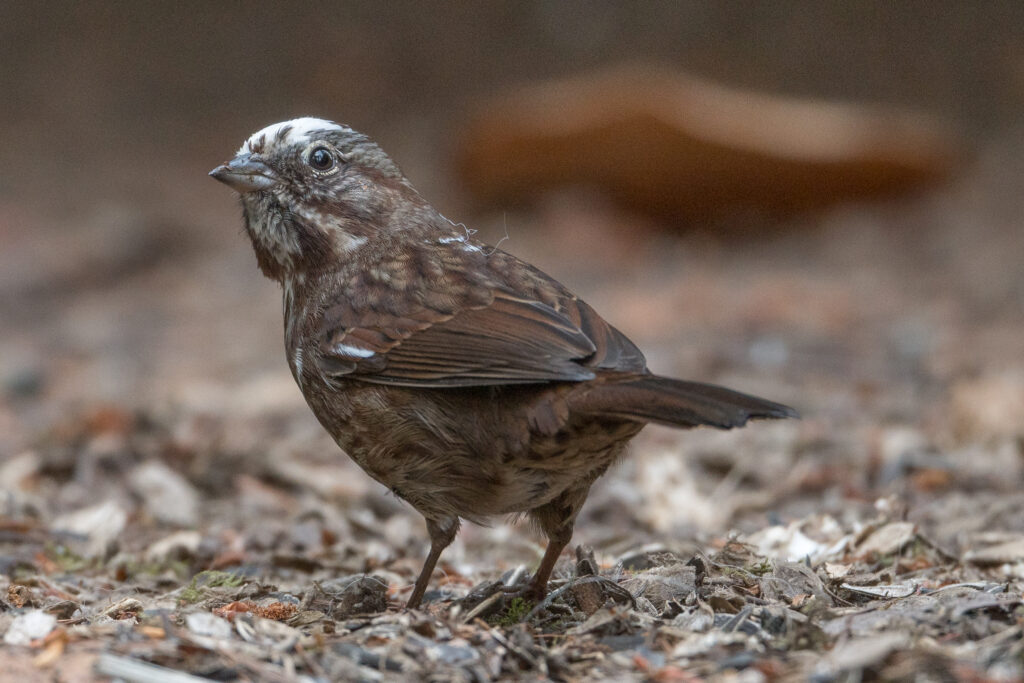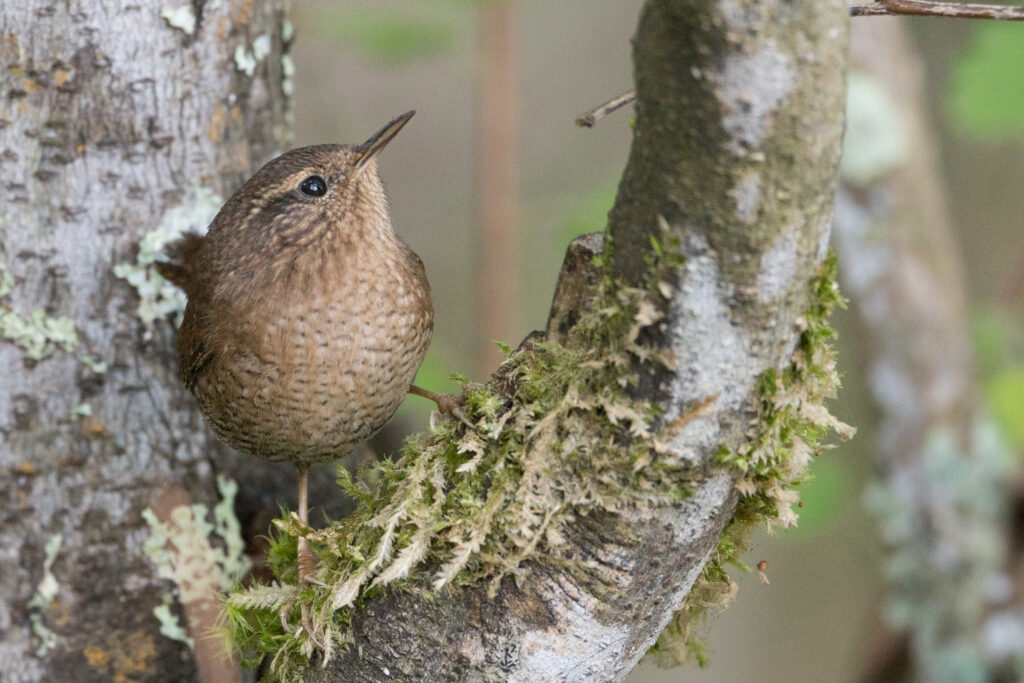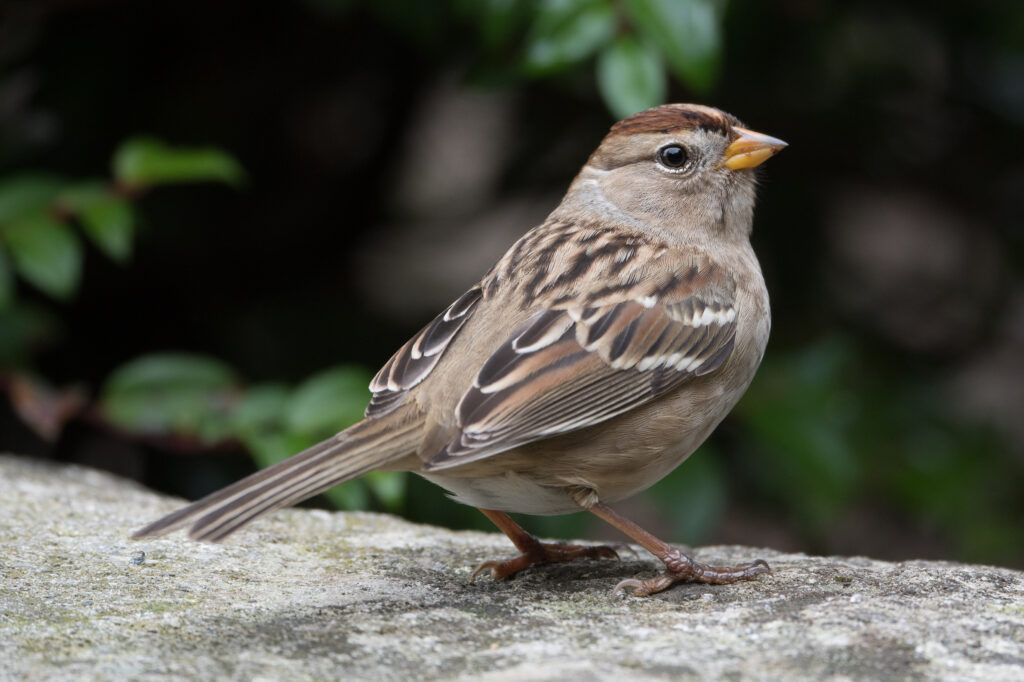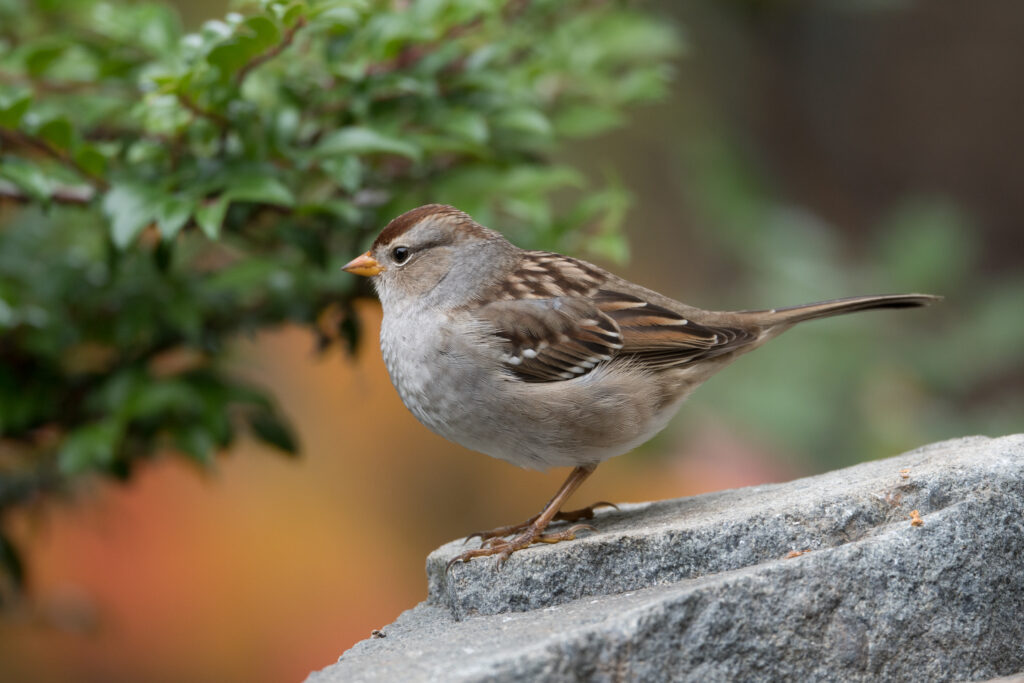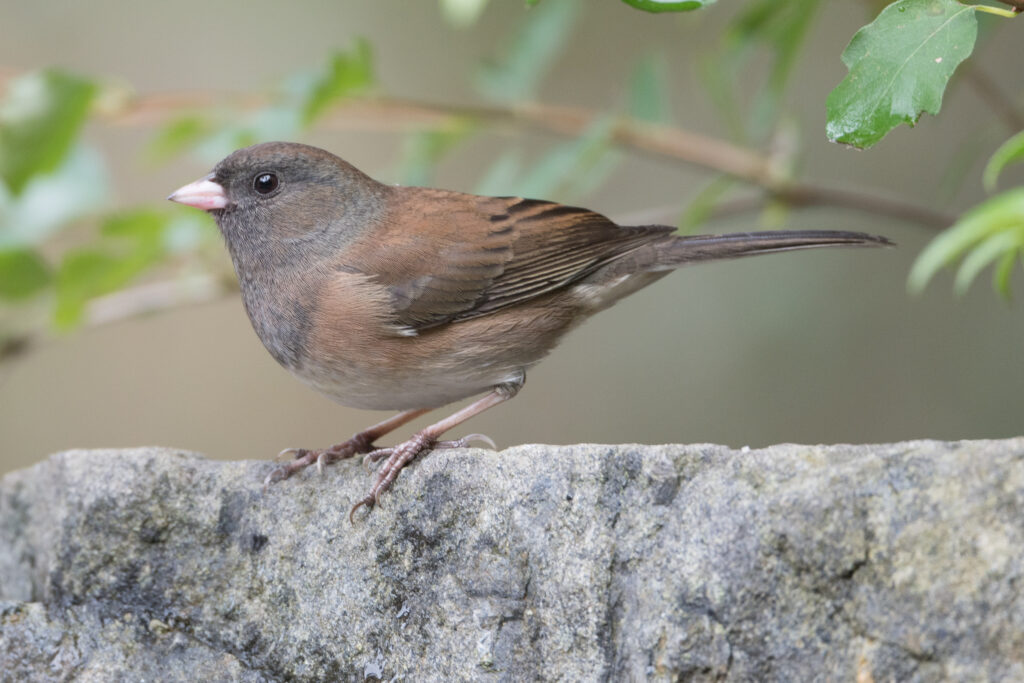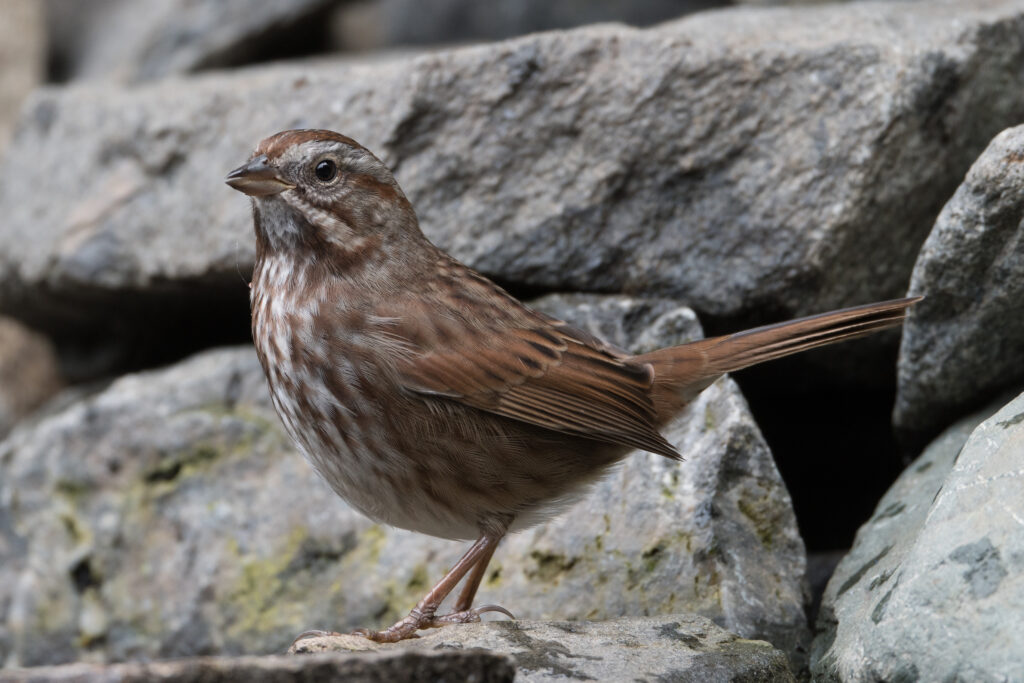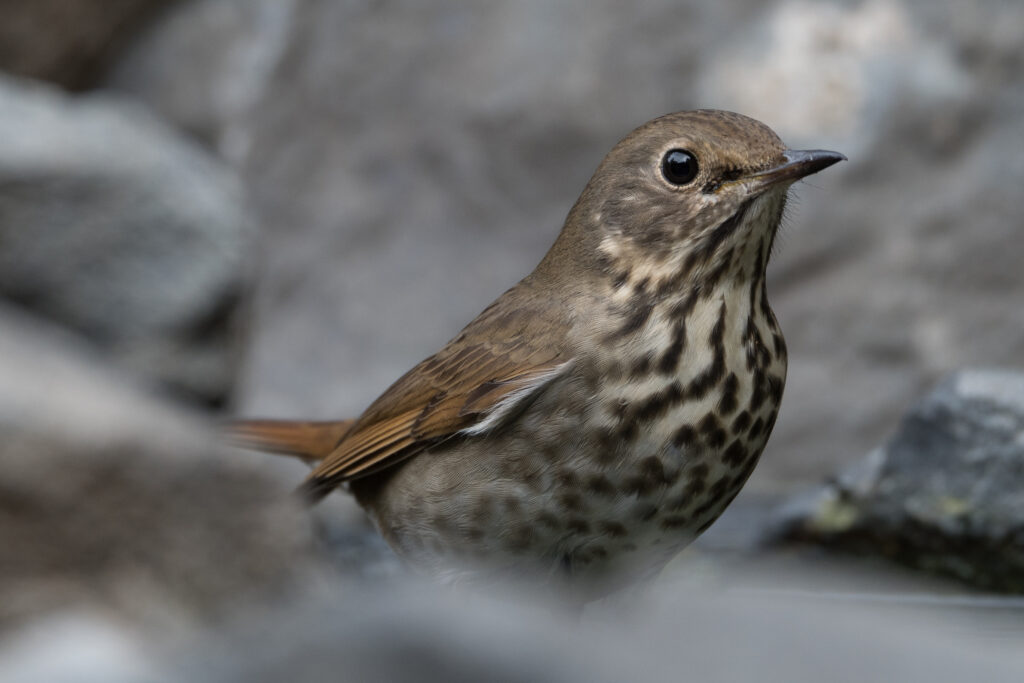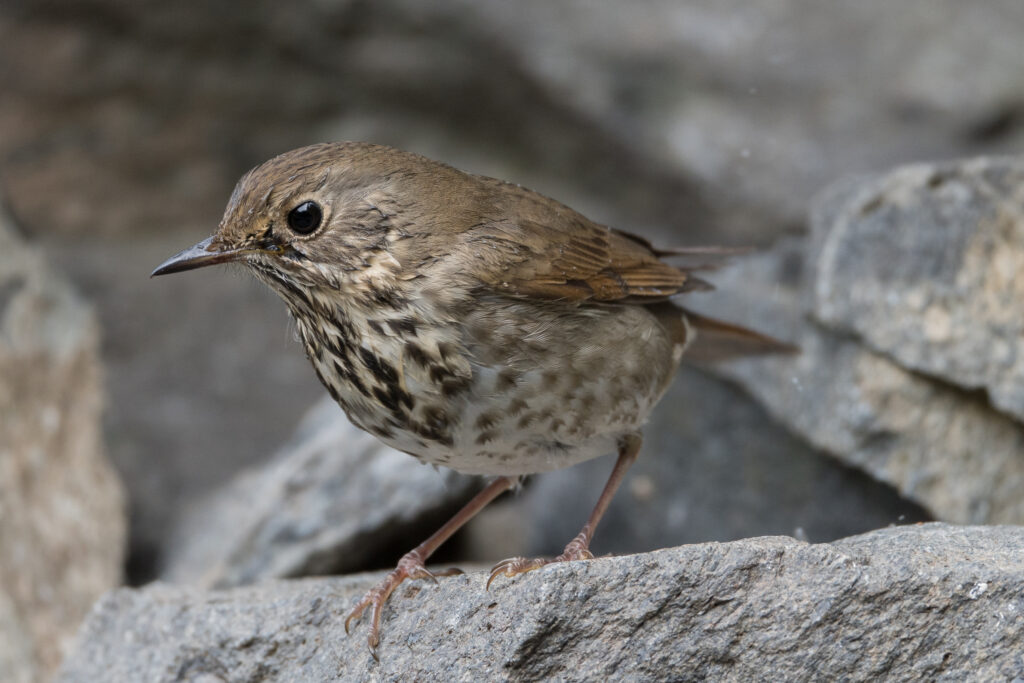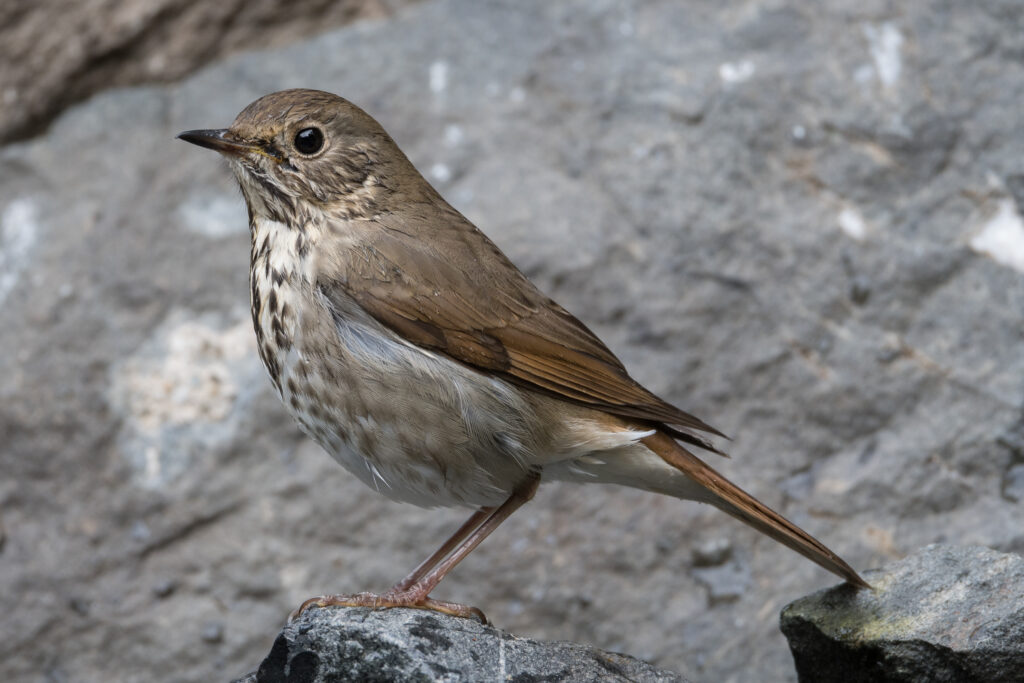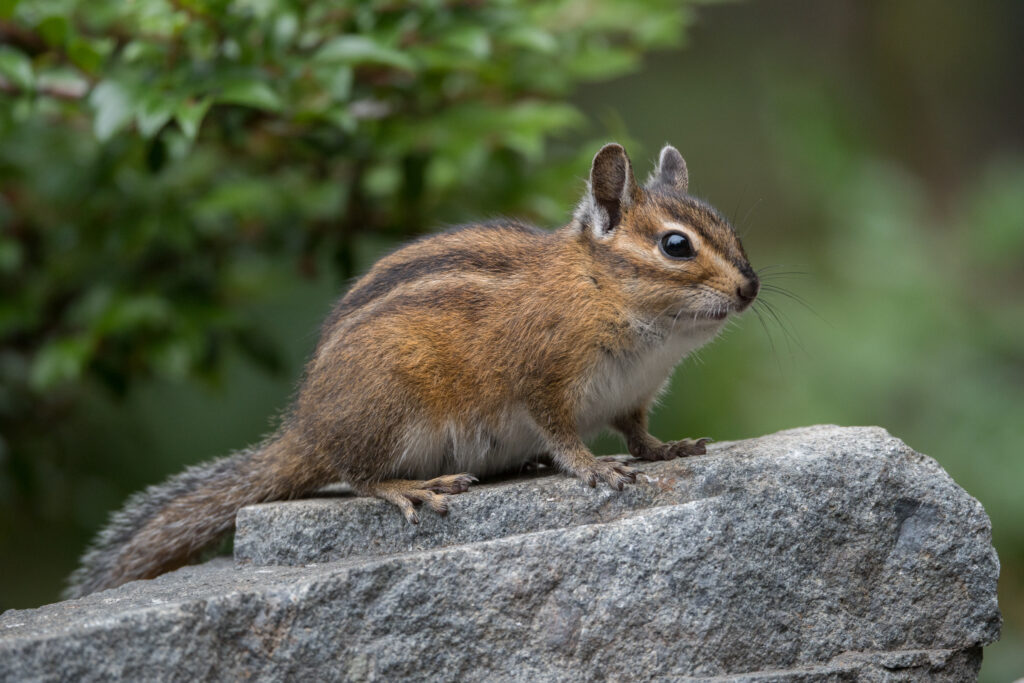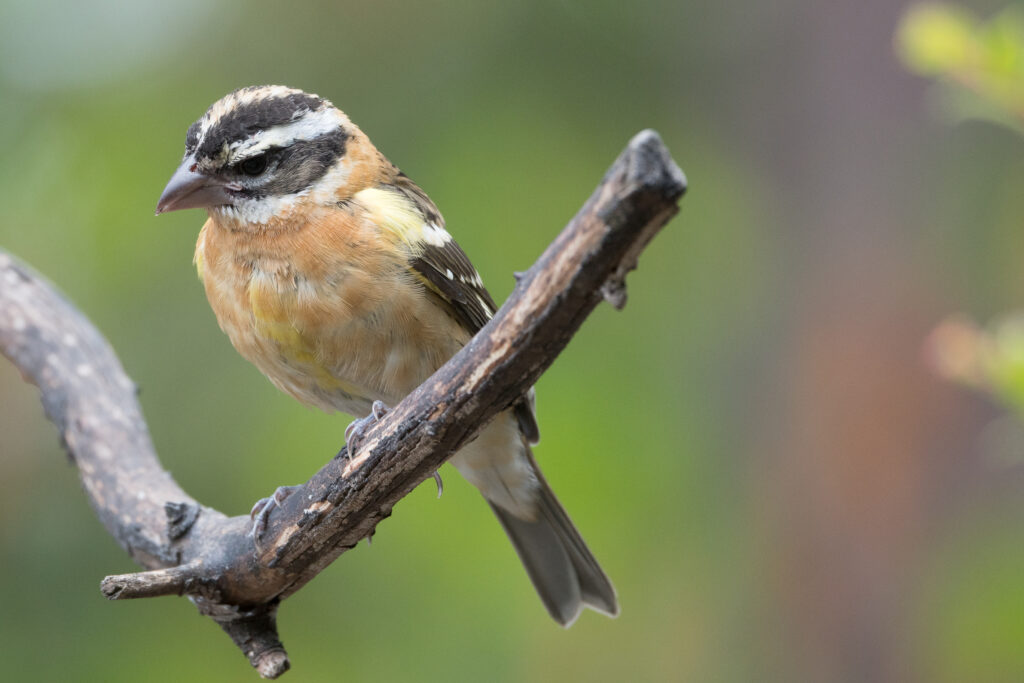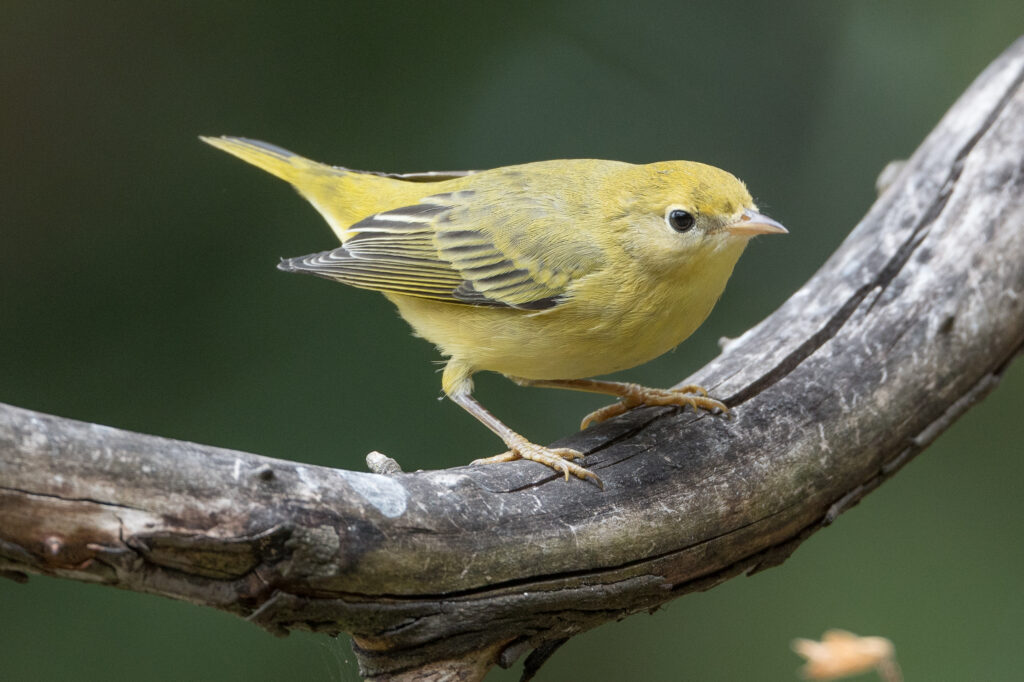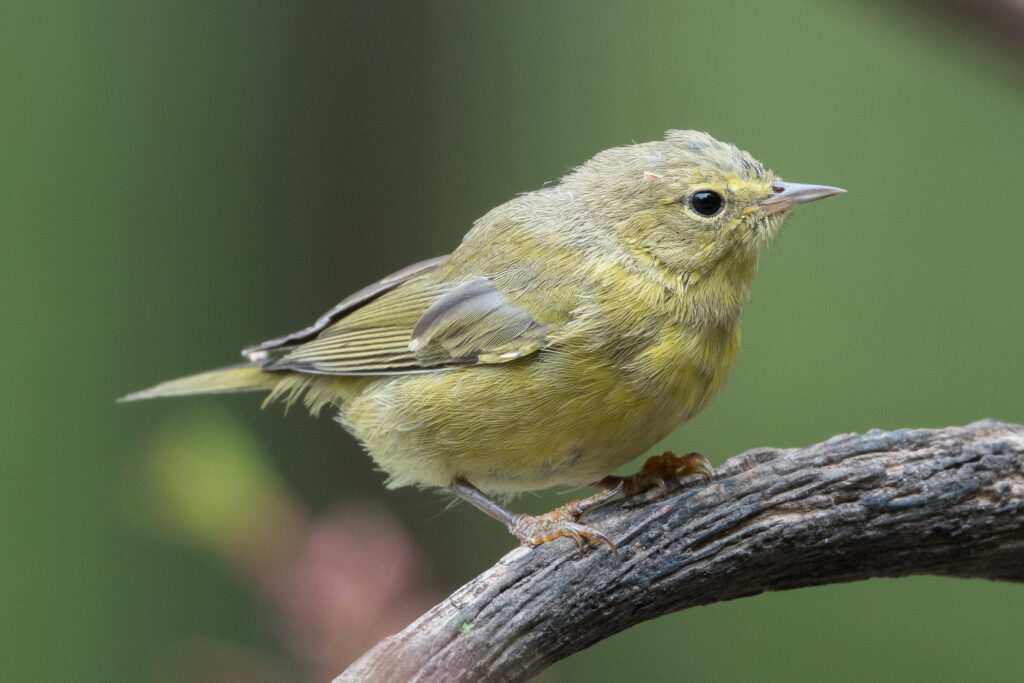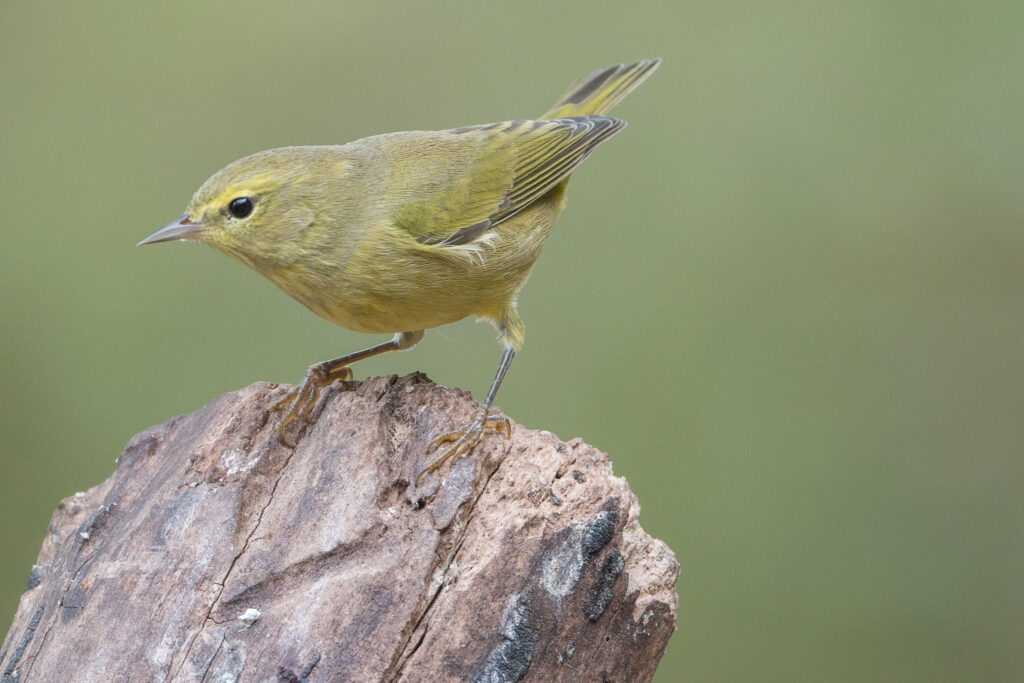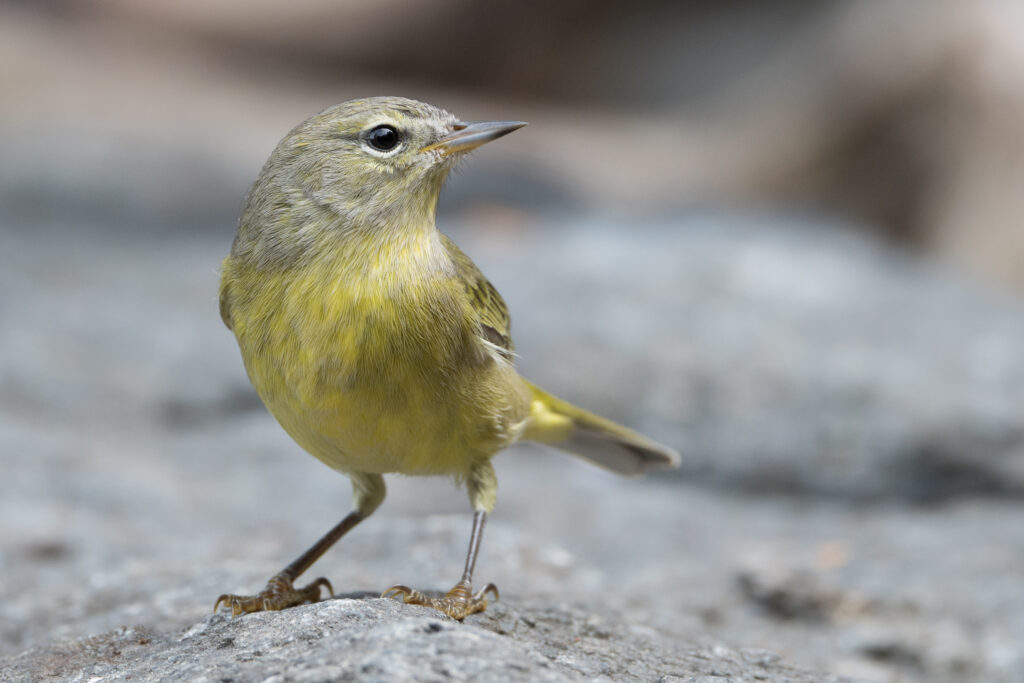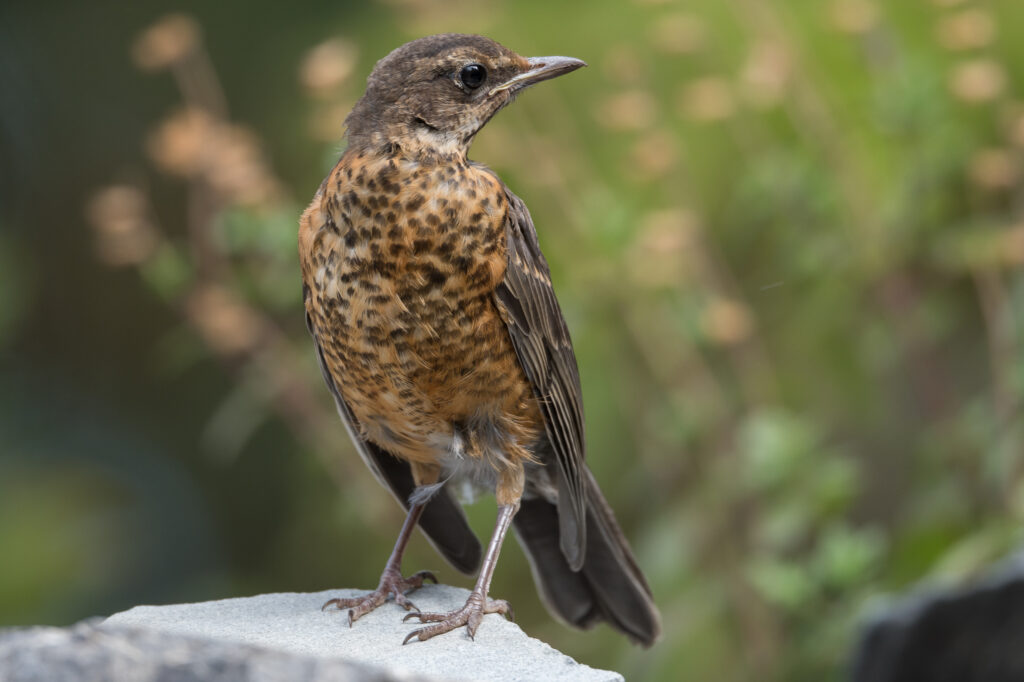Fall migration has slowed, but we still have a few interesting birds trickling through.
On October 5, 2022, we had a Yellow-rumped warbler stop by for a bath in the watercourse. This was probably a female and/or a first year juvenile judging by its muted plumage. It was generous with its time, allowing me many opportunities for photos.
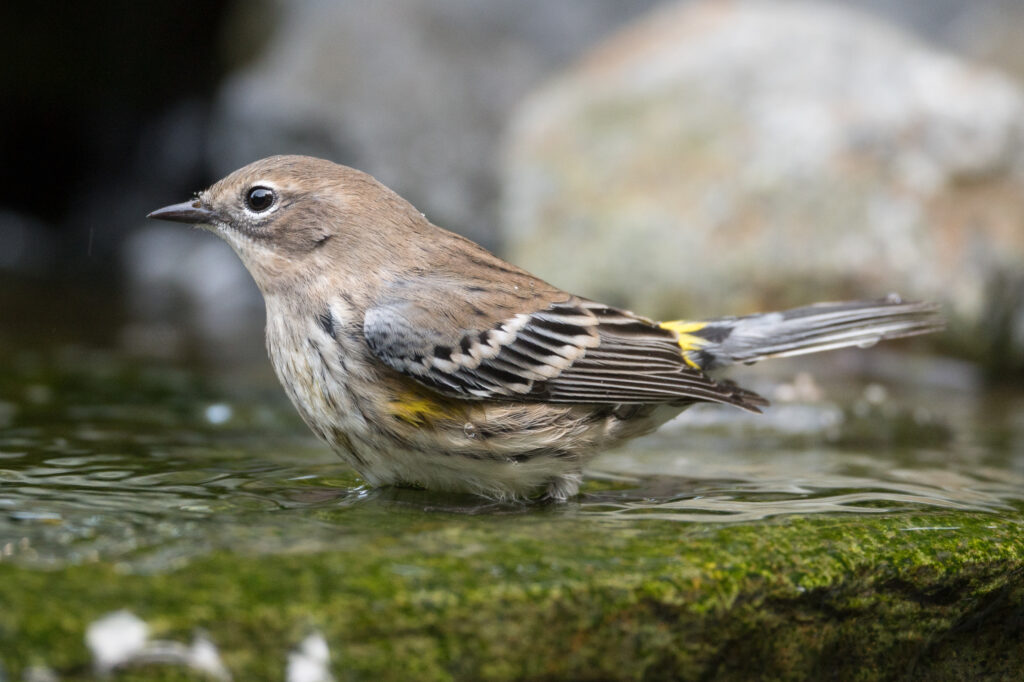
On October 07, 2022, we had another Hermit thrush enter the yard. I thought I had gotten a really good photo, but when I was processing my photos and got to what I thought was my best photo I found it was heavily horizontally banded in colors, something I had never experienced with any camera. However the thrush made its rounds of the yard and I obtained several good photos, including this one.
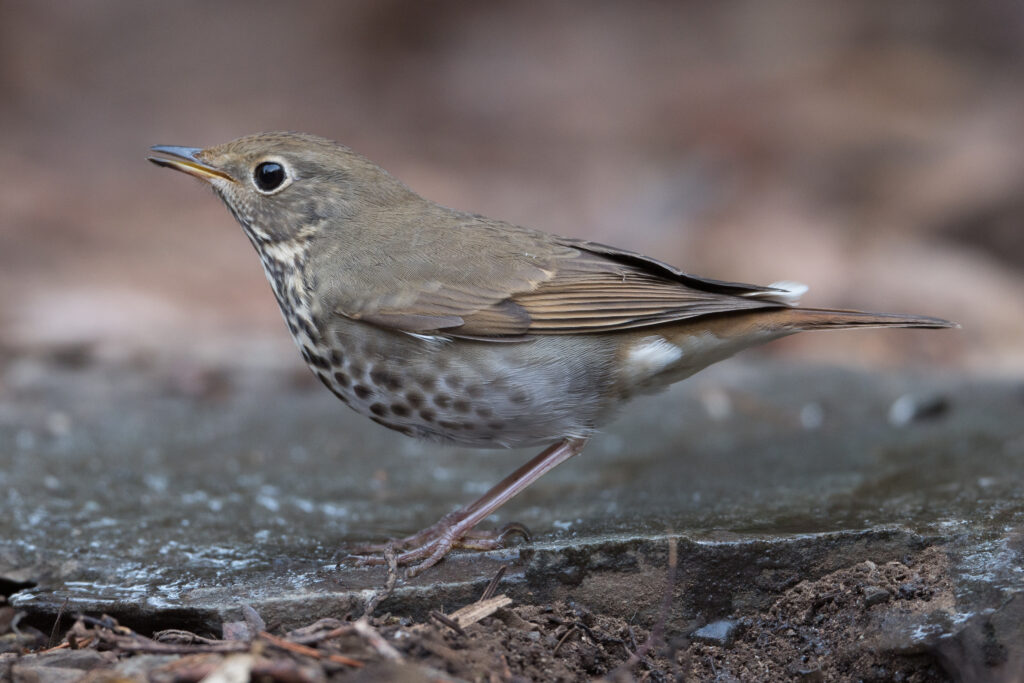
On October 8, 2022, I finally obtained a photo of a Golden-crowned kinglet. I had been seeing a very few but was having a difficult time obtaining a photograph because they weren’t coming down to the watercourse. On this day one made a very brief visit and I obtained a photo.
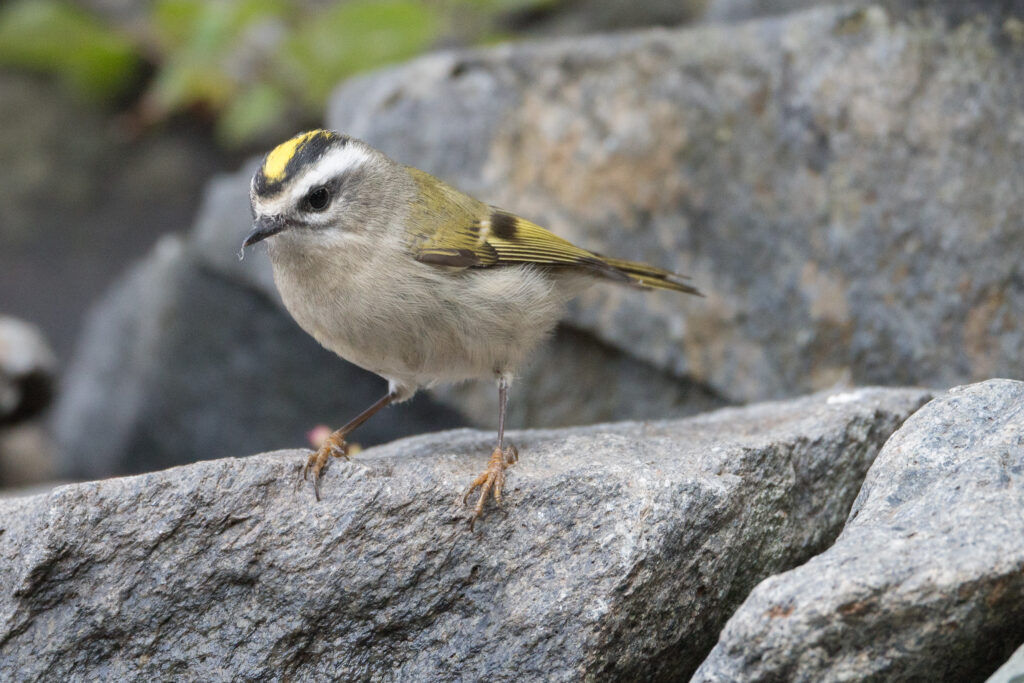
I typed the following paragraph while viewing the Seahawks (RIP) game…
“What’s missing so far… Brown creepers (not migratory) which haven’t visited in many months and Ruby-crowned kinglets. Our next “first of season” visitor is likely to be a Varied thrush, but that’s probably not going to happen until the Cascades get snow which will drive them down from the mountains. We desperately need precipitation… even native plants in the yard are suffering.“
Less than an hour later I was freshly outside with my camera when I detected movement of a larger bird in one of our fir trees. I didn’t have a clear view but managed to see enough to identify a male Varied thrush. I took a “record” photo… a photo I could use to confirm I’d seen the bird. If you’re wondering what a record photo might look like, I’m including it here…
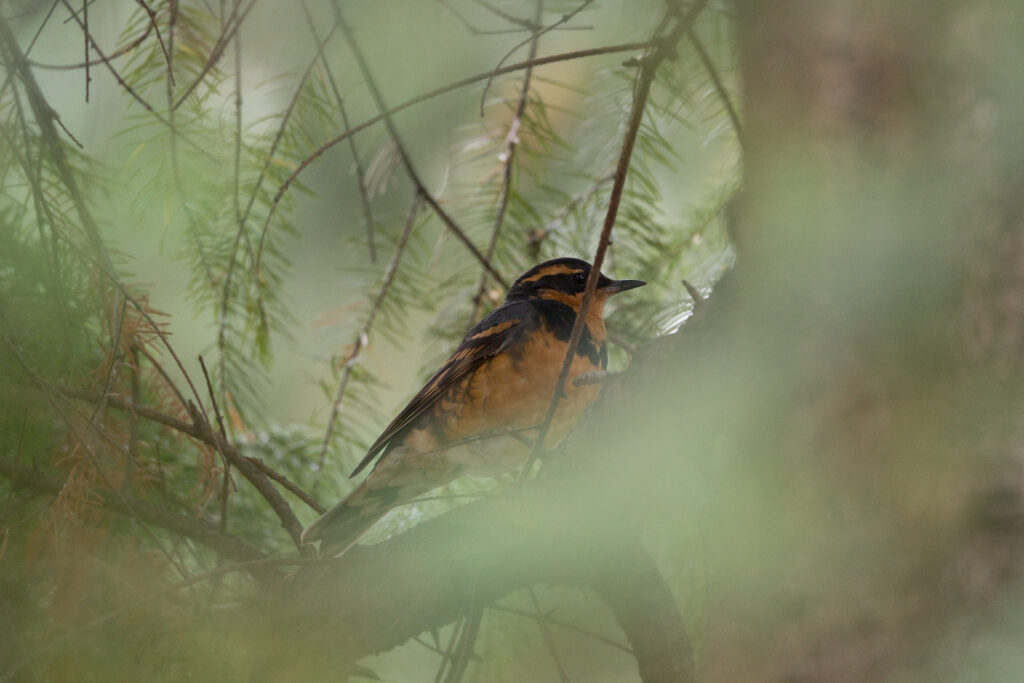
I really disappointed when I miss the opportunity to obtain a photo of a first seasonal occurrence for the yard, but I wasn’t to be disappointed this day. The bird made its rounds of the yard and finally descended to the watercourse for a lengthy drink, in essence making my day!

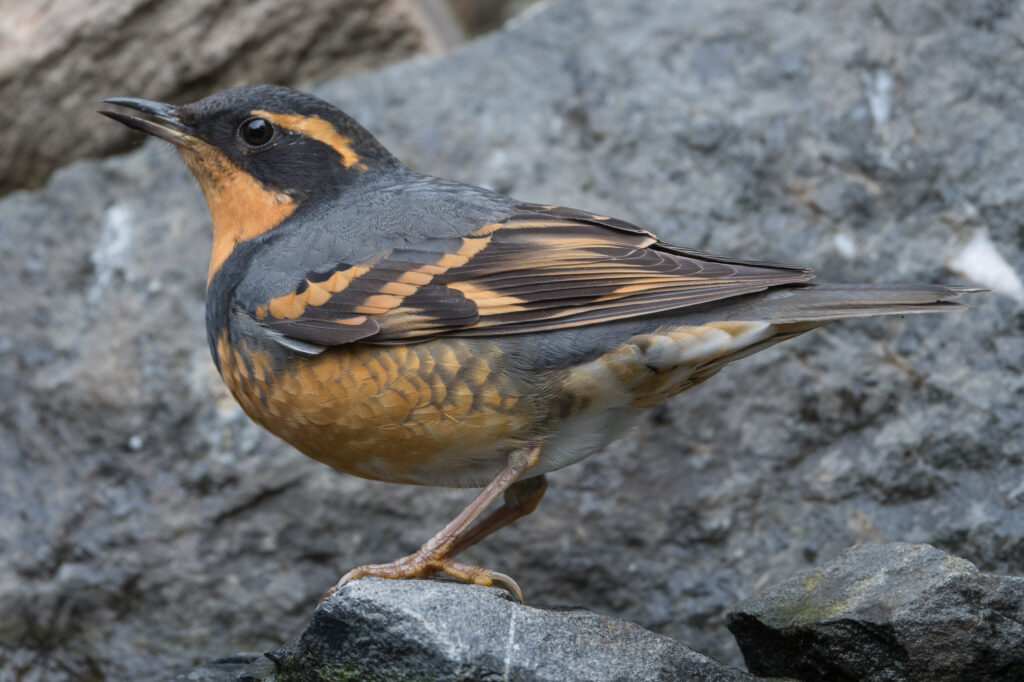
A short time later a female or juvenile Varied thrush male a brief appearance but I was unable to obtain a photo of it.

